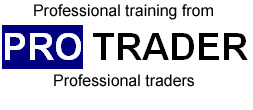Following on from the earlier test here is another example of the biases that can thwart us in our trading ambitions.
Don’t believe you suffer from any behavioral biases ??? – well try this test then – just two questions with two choices each
Again give your answers before reading past the questions.
What would you honestly do if confronted with these choices in real life
(1) Would you prefer to take
1. A sure gain of £24,000 or
2. A 25% chance of making £100,000 but with a 75% chance of gaining nothing at all.
(2) Would you be prepared to swallow
1. C) A sure loss of £75,000 or prefer
2. D) A 75% chance of losing £100,000 and a 25% chance of losing nothing
SEE ANSWERS BELOW
Most people choose A and D.
This combination is actually illogical and demonstrates our tendency to succumb to cognitive biases:
Choosing A over B is consistent with risk aversion
Whilst choosing D over C is consistent with risk seeking
Choosing A over B highlights the fact that most people are risk averse with respect to gains – they prefer to bank a smaller sure gain than take the better probability bet albeit with the chance of possibly coming away with nothing at all – ie in trading we have the overwhelming tendency to grab at small profits when the opportunity presents itself rather than let them run even if that is probabilistically the best option.
However choosing D over C indicates that people are prepared to take risks and bet against the probabilities with respect to trying to avoid losses – we are prepared to gamble even larger sums in the hope of eventually reducing an existing loss – ie in trading we tend to hang on to big losers in the often forlorn hope that they will “come back” and “save us” from taking that original loss.
Again these are bad traits for traders to have.
Psychologists have ascertained that in general people hate losses around 2.25 times as much as they enjoy an equivalent gain.
This bias is known as “loss aversion” bias and those that got low scores in the CRT test are more susceptible to it, as well as many other behavioural biases, than those that scored high in the CRT test.
The beginners/intermediates course covers psychological biases in more detail – often where traders are going wrong in trading are not just the entries and exits but these related aspects which need to be brought to their attention before they can ultimately succeed.

